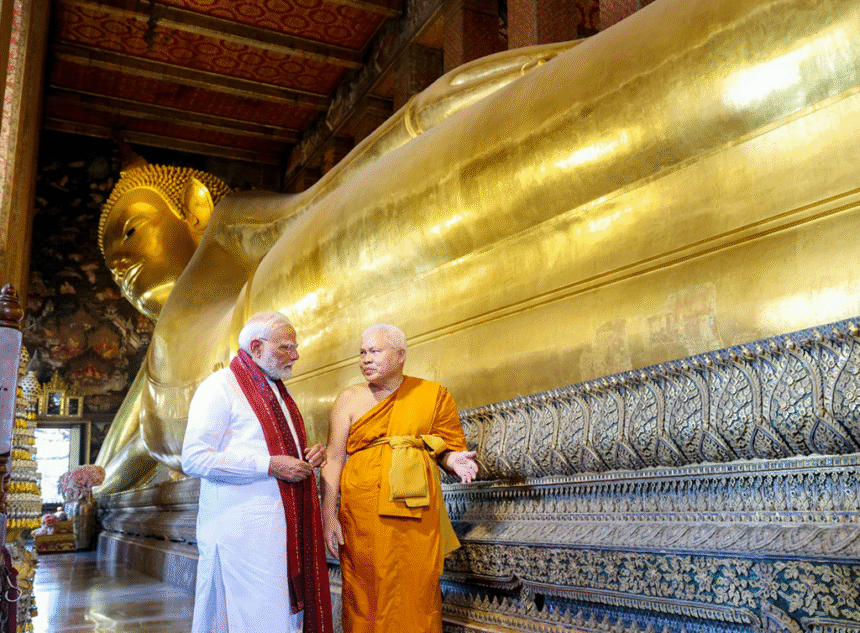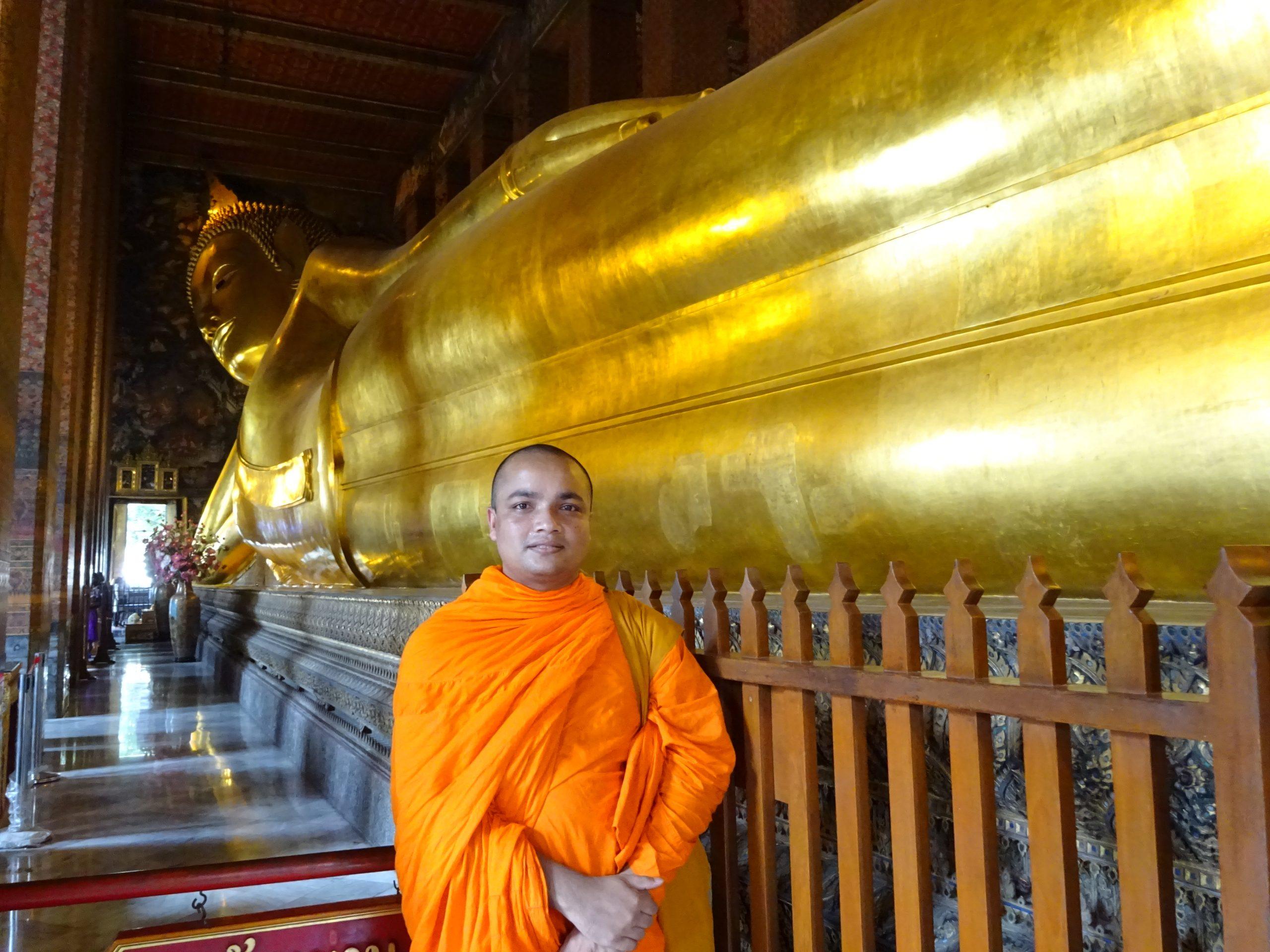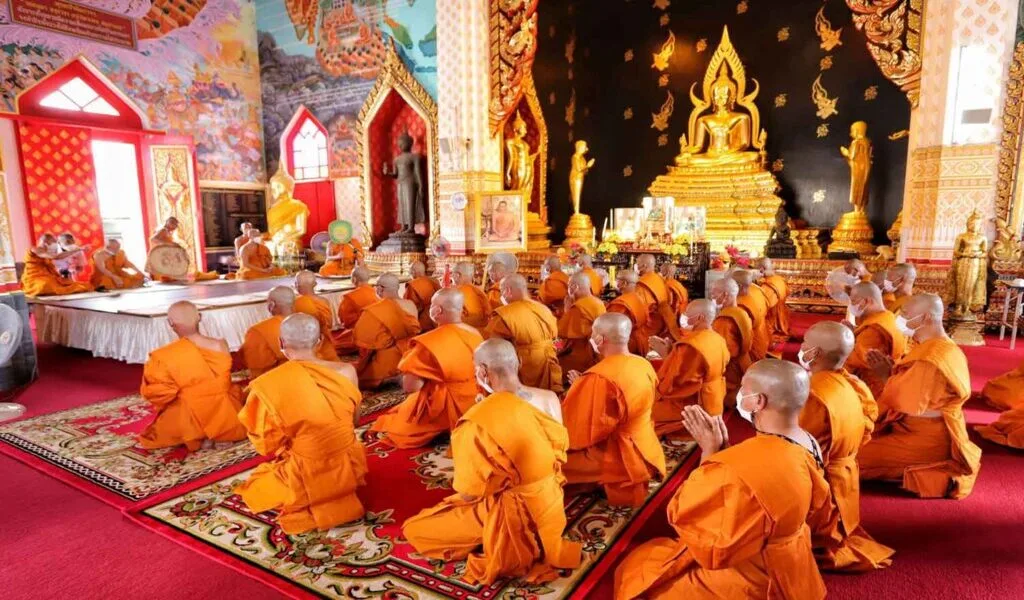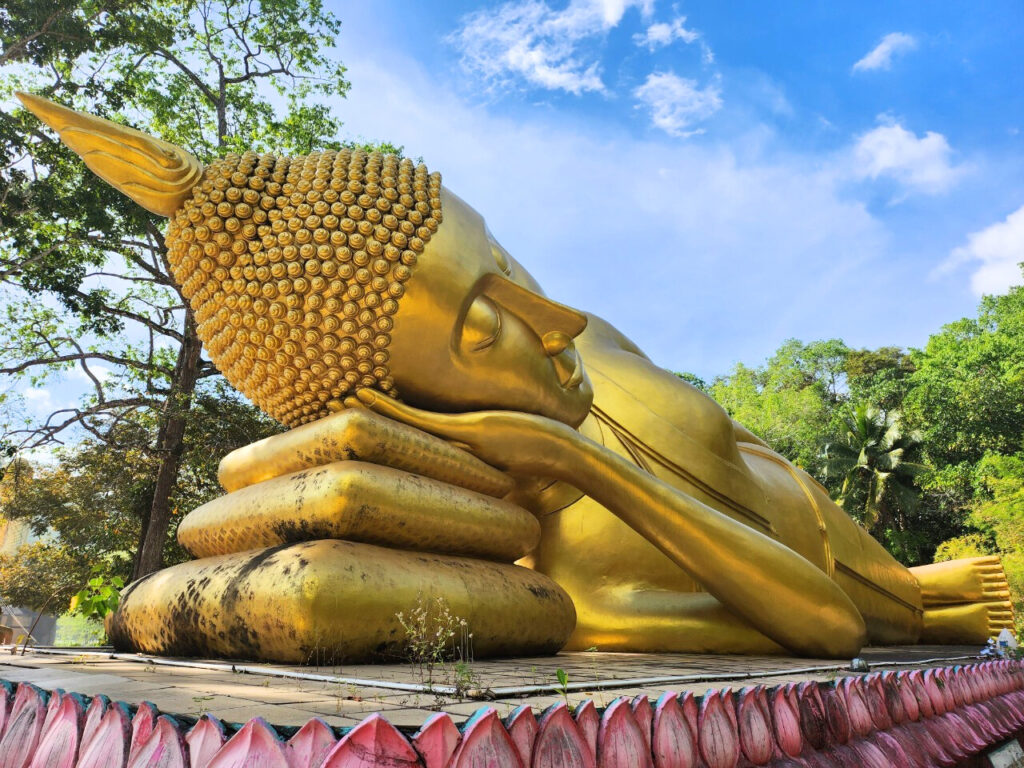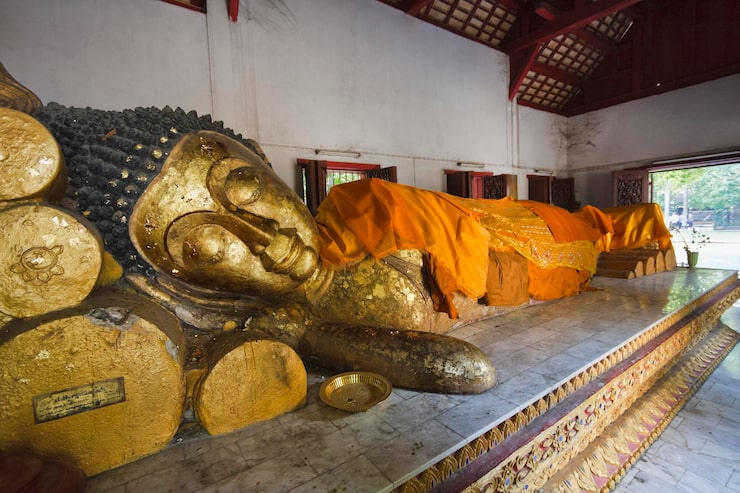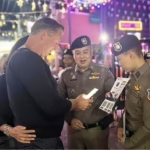BANGKOK – Thailand’s cultural heart beats strongly in its temples and traditions. Among them sits one of Thai Buddhism’s most recognizable images, the Reclining Buddha. Seen in many wats across the country, and most famously at Wat Pho in Bangkok, this vast figure carries deep spiritual meaning.
Its calm face and grand form reveal both artistic skill and a clear link to Buddhist thought. This guide looks at the meaning of the Reclining Buddha, its history, and how Buddhism shapes Thai life.
The Reclining Buddha as a Sign of Enlightenment
The Reclining Buddha, or Phra Buddhasaiyas, shows the Buddha lying on his right side. His head usually rests on his hand or a cushion. The posture signals the Buddha’s final moments before entering Parinirvana, the complete release from the cycle of birth and death, or samsara. While seated Buddhas often represent teaching, and standing figures can signal blessing, the reclining figure marks the Buddha’s passing into nirvana, a moment of profound peace.
The best-known example stands at Wat Pho, also called Wat Phra Chetuphon, in Bangkok. It stretches 46 metres in length and rises 15 metres high. The statue shines with gold leaf and features mother-of-pearl inlays on the soles of the feet. These inlays show 108 auspicious signs linked to the Buddha. Its size and gentle expression encourage quiet thought about change, mortality, and the path to awakening.
This image ties closely to key teachings. Buddhist texts recount the Buddha’s final hours beneath sal trees at Kushinagar in India. He told his followers to look to the Dharma after his passing. The reclining pose reminds viewers of anicca, or impermanence, and points to the end of suffering through insight and compassion.
How the Reclining Buddha Took Shape
King Rama III commissioned the Wat Pho Reclining Buddha in 1832, during the Rattanakosin period. By then, Bangkok had become the capital. Wat Pho itself predates the city’s founding in 1782. The temple covers around 80,000 square metres and functions as both a sacred site and a centre of study. It helped form Thailand’s first public education initiative and preserves traditional Thai knowledge, including medicine and massage.
Building such a monument formed part of a wider royal policy. Thai kings strengthened their rule by supporting Buddhism as a unifying force. Through great works, they acted as guardians of the Dharma and patrons of the Sangha, the monastic community. The scale and craft seen in the Reclining Buddha reflect royal devotion, resources, and a long-standing duty to protect the Buddhist heritage of the kingdom.
Other large reclining figures appear across Thailand, including at Wat Lokayasutharam in Ayutthaya and Wat Khun Inthapramun in Ang Thong. Styles and sizes differ, yet the message stays the same. Each statue points to impermanence and liberation. Their spread across time and region shows how strongly Buddhism guides Thai art and architecture.
Buddhism in Thailand as Daily Practice
Theravada Buddhism forms the core of faith and customs in Thailand. Most of the population identifies with this tradition. The religion reached the area more than two millennia ago, likely through trade and missions from India. It took solid root in the Sukhothai era during the 13th and 14th centuries and remains the main form of practice today.
For many Thais, Buddhism is woven into daily life. Temples, or wats, act as community centres for ritual, study, and social events. Monks are trusted spiritual guides. They bless homes, lead rites, and keep the teachings alive. Temporary ordination for young men is common, seen as a way to gain merit for oneself and one’s family.
Merit-making, or tham bun, sits at the heart of practice. People give alms to monks, support temple repairs, or meditate to build positive karma. They believe these actions help now and in future lives. This outlook encourages generosity and care for others. It can be seen at Songkran and Loy Krathong, where offerings, cleansing, and gratitude shape the celebrations.
The Reclining Buddha in Public Life
The Reclining Buddha at Wat Pho holds a special place in Thai society. It draws millions of visitors each year. For Thai devotees, a visit brings merit and a quiet moment with the teachings. Chanting, incense, and prayer create a sense of calm, even in the centre of busy Bangkok.
Visitors from abroad often place Wat Pho high on their lists. The statue’s scale and fine detail highlight the talent of Thai craftspeople. Its spiritual message opens a window into Thai Buddhist thought. Wat Pho is also a hub for traditional Thai massage. Many visitors come for healing, rest, and a gentle link between body and mind.
The figure’s influence reaches beyond the temple grounds. Images appear in art, films, and souvenirs. During festivals like Visakha Bucha, which marks the Buddha’s birth, enlightenment, and passing, temples with reclining statues become sites of major rites and processions. These events show how deeply the image is tied to religious life.
Facing Change, Keeping Meaning
Buddhism still shapes Thailand, yet it meets fresh pressures. Cities grow, global trends spread, and material goals rise in appeal. Reports of misconduct within the Sangha sometimes trigger public debate. Even so, the tradition adapts. Monks teach online, and temples run retreats for people seeking focus and calm in daily life.
The message carried by the Reclining Buddha still fits modern needs. In a time of constant change, it points to balance and inner stillness. Mindfulness classes, meditation centres, and wellness tourism linked to temples like Wat Pho offer practical ways to apply Buddhist ideas today. Is there a better reminder to slow down and look within?
The Reclining Buddha stands as far more than a vast artwork. It carries Thailand’s spiritual story and cultural pride. The scene of the Buddha’s final moments speaks to the truth of change and the promise of release from suffering. It resonates with worshippers and visitors alike.
As a symbol of Thai Buddhism, the Reclining Buddha reflects how religion runs through daily routines, from almsgiving to festival rites. In a changing world, the figure at Wat Pho and others across the country continue to inspire reflection and care for others. They keep alive the values of compassion, mindfulness, and clear insight that sit at the heart of the Buddha’s teaching.




